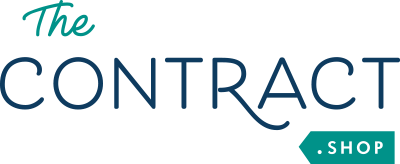Your Cart is Empty
Shop confidently - 14-day no-hassle return policy
Shop confidently - 14-day no-hassle return policy
Shop confidently - 14-day no-hassle return policy
Want to get started as a freelance graphic designer, but unsure of how to start? You’re not alone. Thousands of freelancers across industries struggle with confidently pricing their services, often setting rates for projects that aren’t aligned with the expected rates in the market. Because graphic design spans across many avenues, it’s important to stay on top of current rates for each service you provide.
It is worth it to be a freelance graphic designer when you know exactly how to set your rates, which is why contract templates and rate templates are a game-changer. At The Contract Shop, we offer a wide variety of contracts drafted by expert attorneys, including website design contract templates, templates for graphic design contracts, and agency agreement contract templates.
In this article, we will help you develop your very own rate card template.
A rate card (also referred to as a ‘rate sheet’) is a document that lists the costs and details for different services provided by a servicer. In this case, the servicer is the designer and the different services can include the types of projects and their estimated rate for each.
Most examples for rate cards are for platforms that are advertised on, such as commercial slots or billboards. However, rate cards are more and more common for freelancers, including graphic designers and even social media influencers. Here are some key factors to consider when developing your rate card:
There are pros and cons for setting your rates at either an hourly rate or a flat rate per project. When you charge per project, you can make more profit depending on your skill level. Charging per project allows you to take on as many projects as you can handle, rather than burn out trying to get enough hours–you’re compensated for the end result rather than the amount of time you put in.
If you’re a skilled designer, you can complete projects more quickly and be compensated for your expertise; you also won’t lose out on money because you’re more efficient, unlike if you charge hourly. However, it can be harder to pitch project rates to clients because most workplaces charge per hour. Also, accurately estimating a project rate can be difficult, because these rates vary and there isn’t an established industry standard.
Hourly rates are easier to define across industries and ensure you are paid for all the time you’ve allotted to a project or client. However, they don’t always take value into account and can cap your earning potential. If you’re a more efficient designer, you miss out on earnings.
Depending on their location (cost of living makes a huge impact) and experience, graphic designers can make anywhere between $25 per hour and $300 per hour. This range is very large, so consider your experience, skill level, and reviews from past clients when setting your rates.
You should, at minimum, increase your rates each year to keep up with the cost of living in your area. Many freelancers forget to adjust their rates annually, causing them to lose money each year doing the same work!
Unlike your other design projects, your rate card doesn’t need to be flashy or excessive. It really only demands some key information and is formatted in a way that aligns with your brand as a freelancer. Here is the information your rate card must include:
Whether you decide to charge per project or per hour, including this information is helpful for clients estimating their budget for booking with you. The project rates you list should factor in an hourly rate that you can use to justify the cost.
Entry-level designers typically charge between $25 and $50 per hour, and experienced designers charge between $65 and $300, depending on the project and experience.
Here are the current rates for common design projects:
Your rates should be clear and easy for clients to understand, and should reflect your skills and expertise. For more information on building your brand and small business, including information on if web designing is a good career or where to find contract templates, check out our other articles!
Kevin Gallagher is the CEO of The Contract Shop®, a contract template store for creative entrepreneurs, freelancers, coaches, and more. His background is in helping online businesses grow, having previously worked at Allbirds managing part of their operations. He is proud to report that his digital artist wife Mandy is a happy customer of The Contract Shop®, and his main motivation is to help as many people like her as possible with the tools that they need to confidently manage their businesses.
Comments will be approved before showing up.
